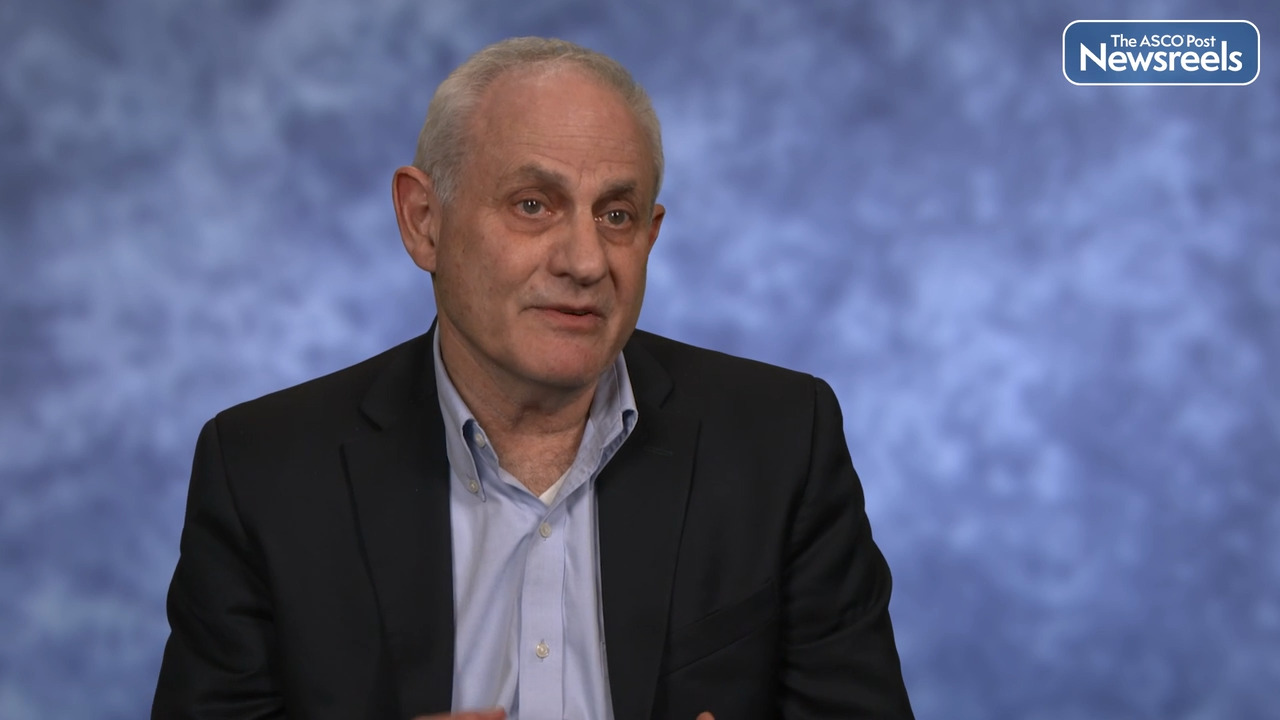Transcript
Disclaimer: This video transcript has not been proofread or edited and may contain errors.
The data I'm presenting today is on a slightly larger population. Tony presented the progression-free survival cohort. This is the intention to treat pro-cohort. So it's 850 rather than 650 patients. So it's slightly larger. And what it shows is very consistent results with the initial results, which is reassuring. We have a hazard ratio of 0.74 for progression-free survival. We haven't updated the overall survival signal. It's really important we see that in the future.
So the updated data with the larger population is consistent with the original data with a hazard ratio of 0.74, which is reassuring. The response rate, again, is slightly higher, but not as high as we wanted to see. And the last piece of the information, which I think is the focus of what I'm going to talk about, is there was a signal in the intermediate and poorest population suggesting most of the benefit was confined in the initial analysis, the intermediate population.
Now it's important to stress that this was an exploratory analysis and actually the number of patients in the original poorest group was relatively modest. So we need to be very careful about over-interpreting this type of data. So we've looked at the larger population, the ITT population for intermediate and poor. Now again, the numbers are still modest and it's still an exploratory endpoint, but the results are consistent. So the hazard ratio for the intermediate patients for the triplet is 0.68; and the hazard ratio for disease-free survival in the poorest population is 0.93.
It looks like most of the benefit is confined the intermediate risk group. Now, why would this be the case? The first assumption might be, but it's difficult to give triplets to poorest patients. They may have more comorbidities, worse performance status. And so we looked at that and actually we didn't see that much there. There were some differences in the frequency of nephrectomy, for example, but there weren't massive differences between the two populations in that respect. And then we looked at duration of drug. You might think a patient is struggling with a drug, they're getting less drug, but that wasn't the case. Actually, the duration of therapy in the intermediate and poorest and the exposure to therapy in the two groups, particularly around the triplet therapy, very similar in both arms.
And so if it's not to do with the difference in the patient population, and it's not because the poorest patients can't get their drugs in, what else could it be? Well, it could be the biology. We know some from previous work and Dave McDermott did a lot of this work. We showed that the good risk patients or the better risk patients had more VEGF-driven tumors. And we know that the poorest patients have more immunogenic tumors and therefore makes sense that actually adding VEGF target therapy to those poorest patients where the VEGF therapy doesn't work very well, might actually be the answer to the question.
But I need to come back to where I started. This is exploratory analysis. It's not powered for this type of analysis. A lot of what I said is exploratory and speculative. Nevertheless, it's really important because we're beginning to learn the biology of the disease. You'll be aware we haven't done as much biomarker work as we'd like in kidney cancer. And this points us towards the fact that if we did do more biomarker work, we might be able to identify those patients who benefit more.
So in summary, cosmic 313 with more robust data with longer five additional months of follow-up continues to show that progression-free survival advantage, that subtle differences between the intermediate and poorest patients remains in place. We are super excited about the oval survival signal in the future, and we hope that this actually also tells us a bit about the biology of the disease. Be careful with statistics.





